Introduction:
‘Textile materials and products created primarily for their technical and performance features rather than their aesthetic or decorative attributes’ is the definition of technical textiles. Technical textiles make up over 19% (10 million tons) of the world’s total fiber consumption for all textile purposes and are the segment of the textile industry that is expected to develop at the highest rate. One of the areas of technical textiles that is expanding is agrotextiles. In comparison to other technical textile applications, agricultural applications need a relatively small amount of special textile manufacturing. This does not negate the importance of textile use in agriculture.
The use of textile materials in agriculture is known as agrotextiles. Global population growth has resulted in greater strain on agricultural products. Thus, it is imperative to raise the agro-products’ productivity and quality. However, it is impossible to completely adhere to the conventional practices for applying pesticides and herbicides. Today’s horticulture and agriculture understand the demands of the future and are using a variety of technology to produce agro-products that are greater in quality, taste, and total production.
History of Agro Textiles:
Textiles intended for agricultural use, or agro-textiles, have developed from conventional materials to advanced techniques. Basic agricultural duties were originally completed using natural fibers, but innovation was sparked by the Industrial Revolution and the creation of synthetic fibers in the 20th century. Agro-textiles, such as frost protection coverings, shade nets, and insect-repelling nets, were developed to tackle problems like pests and weather. Technology developments, such as precision farming, have increased its efficacy. Agro-textiles are becoming increasingly important on a worldwide scale, helping to improve agricultural sustainability and production.
Fibers Used in Agro Textiles:
Man made (synthetic) fibers are preferred for agricultural products than the natural fibers due to their high strength, durability and other suitable properties of agricultural applications. On the other hand, natural fiber based agro-textiles not only serve the specific purpose but also after some years degrade and act as natural fertilizers.
Though man made fibers (like poly-olefins) are preferred for agro-textiles than the natural fibers mainly due to their favorable price performance ratio, lightweight with high strength and long service life, but natural fibers can be used in agro-textiles in some specific arena where characteristics like high moisture retention, wet strength, biodegradability are effectively exploited.
Fibers used in agro tech industries are as follows:
- Nylon
- Polyester
- Polyethylene
- Polyolefin
- Polypropylene
- Jute
- Wool
- Coir
- Sisal
- Flax
- Hemp
Properties Required for Agrotextiles:
Tensile Strength: A shade net’s tensile strength may determine how long it will last and how long it will function. Therefore, a crucial need for shade nets is a high tensile strength.
Withstands Solar Radiation: Immediately following planting or sowing, agro textiles are spread throughout the farmed regions. Agro-textiles must tolerate sun radiation and fluctuating ambient temperatures for such applications.
Biodegradability: Natural fibers like wool, jute, cotton are also used where the biodegradability of the product is essential. Natural polymer gives the advantage of bio-degradation but has low service life when compared to the synthetics.
High Potential to Retain Water: This is achieved by means of fiber materials which allow taking in much water and by filling in super-absorbers. While non-wovens meant for the covering of plants show a mass per unit area of 15 to 60 gm/m2, values between 100 and 500 g/m2 are reached with materials for use on embankments and slopes.
Resistance to Microorganisms: It must be resistant to microorganisms to protect the living being.
Protection property: It should be able to block wind and create a microclimate between the ground and the non-woven material, which equalizes humidity and temperature. The temperature in the root region rises concurrently. Early harvests, adequate stiffness, flexibility, evenness, elasticity, biodegradability, dimensional stability, and resistance to moisture are all results of this. Fungicidal finish, which prevents soil contamination, up to 2% of the entire mass.
Applications of Agro Textiles:
A. Agrotextiles for Production of Crops: The selection of Agro-textile products depends on crop needs. Selection of the agro textiles is also greatly influenced by the geographical location. Some of the applications of agro textiles are as follows:
1. Plant Net: Fruits, which grow close to the ground, can be kept away from the damp soil by allowing them to grow through vertical or tiered nets in order to keep the amount of decayed fruit to a minimum. These are made from polyolefin fiber.

Sunscreen Net: The Warp-knitted nets are used in order to protect fields and greenhouses from the intense solar radiation for healthy plant growth and good harvest. Sunscreen nets with open mesh construction are used to control sunshine and the amount of shade required. These net fabrics allow the air to flow freely. So the excess heat does not build up under the screen. The percentage of shadow varies according to the density of threads. The current offer 45%, 65% & approximately 85% shadow.
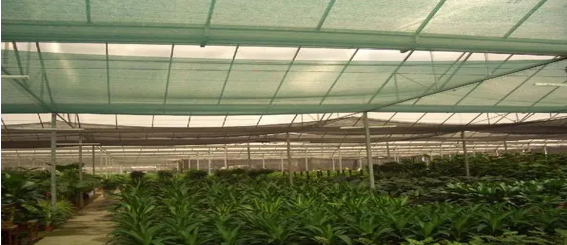
Packing Materials for Agricultural Products:Nets can be used for packaging of farm products for many end uses. It includes packing sacks for vegetables, tubular packaging nets for fruits and wrappers for Christmas trees. Net structures are preferred because of their high strength, low weight, air permeability and cheapness.
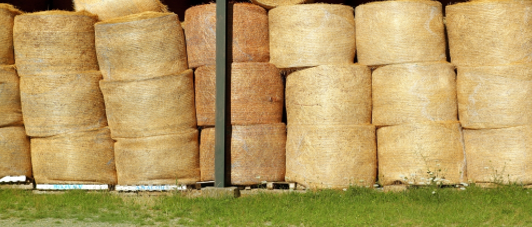
Root Ball Net:It is extremely important for safe and speedy growing of young plants such that the root system is not damaged when they are dug up, transported or replanted. Normally the root balls are wrapped in cloth. Elastic net tubes are an alternative to this. When the plants are transplanted, the nets on the outside do not have to be removed since the roots can protrude through the nets.
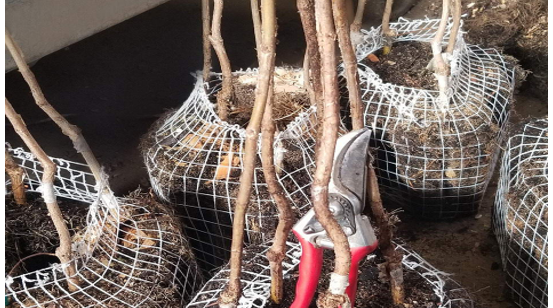
Insect Meshes Net:Various pests like Whitefly, scale insects attack some ornamental plants and vegetables frequently. Clearly, woven and knitted polyethylene monofilament meshes to exclude harmful insects from greenhouses and tunnels, or to keep pollinating insects inside, The fine woven screens protect plants from insect attack (without the use of insecticides).
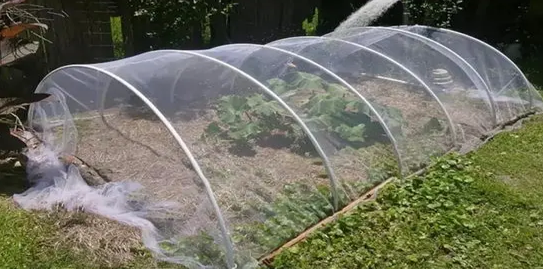
Monofil Nets:Tough, knitted Monofil, nets for windbreak fences and shading/ privacy screens, A suitable windbreak, set at a right‐angle to the prevailing wind, will protect plants against the harmful effects of blustery weather ‐ which can break young branches, damage flowers and cause leaves to dry or tear. The nets also protect against frosts and help enhance the micro‐climate. This not only safeguards the current harvest but also benefits future crops, since the woody part of the plant is protected too.

Cold and Frost Control Fabrics:Cold and frost fabric can be laid directly on the plants, unlike plastic covers that can attract frost, and burn any leaf that touches them. These fabrics protect the plant from frost kill during unexpected late cold snaps and unexpected early ones.

Nets for Covering Pallets:For safe transportation of fruits and vegetables to the market the boxes are covered with large mesh nets and pallets to stop the boxes being turned upside down. This prevents damage of goods during transportation.

Ground Cover Net:Ground cover is an extremely versatile landscaping and horticultural fabric for long‐term weed control, moisture conservation and separation. It effectively suppresses competitive weed growth, conserves ground moisture, maintains a clean surface, protects from UV rays and creates a favorable environment for healthy plant growth. Ground covers can reduce the costs and minimize undesirable herbicide use. It is mainly used in Borders & rockeries, nursery display areas, greenhouse floors, soft fruits beds & orchards, paved areas, horse bridleways & seed harvesting areas. 100% polypropylene is used.
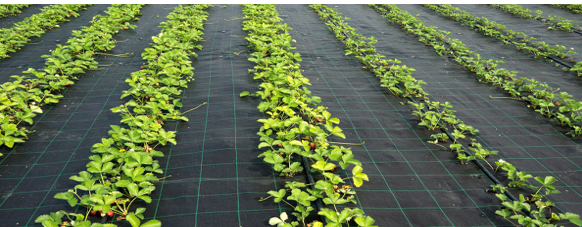
Mulch Mat: Mulch mats are used to suppress weed growth in horticulture applications, It covers the soil, blocking of light and preventing the competitive wheat growth around seed links, This also reduces the need for herbicides required for weed control Needle punched non-woven and black plastic sheet are used for this application, Biodegradable and non‐biodegradable types of mulch mats are available.

Harvesting net: It is extremely helpful to those countries where labor charges are costlier. With the application of such nets for harvesting purposes, the labor cost could be reduced considerably. They are laid on ground or tied under the trees so that fruits fall directly on to them.

Anti-hailstone Nets:Anti-hailstone nets are used to cover plants and fruit orchards to protect them from being damaged by hailstones, but do not restrict their growth. The nets are primarily made from polyethylene monofilaments.

B. Agro Textiles for Horticulture and Floriculture:
Application of textile materials in horticulture is growing fast. Nets, non‐woven mats, movable screens for glass/poly houses, non‐woven sheets, mixed bed for mushrooms, cordage and strings are used in horticulture. Nets are also used for protection against hailstorms, intense sun rays, etc. Light resistant woven and non-woven polyester fabrics are used in the inside of the greenhouse to protect the plants from extreme hot or cold conditions. They are also used on the outside of the green houses as screens to control sunlight.

C. Agro Textile for Animal Husbandry:
Nylon and polyester identification belts are used for cows. Textile nets are used to support the large udders. Non-woven fabrics are used to filter the milk in automatic milking systems and as an underlay to reduce mud on cattle paths and trails
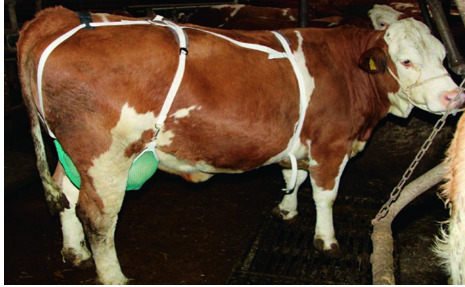
D. Fishing and Aquaculture Nets:
Fishnets are used for fishing and in fish farming. Warp knitted knotless nets result in low energy expenditure when the net is used for fishing. They are mainly produced from Nylon monofilament, multifilament or HDPE.

Manufacturing Processes of Agro Textiles:
Several techniques of fabric production can be used to produce agro-textiles. Each method offers specific advantages for a particular product. The techniques are:
Weaving and Woven Products: Woven products are manufactured by using weaving machines, especially Sulzer projectile weaving machines. The range of light to heavy and wide width fabric production is possible with Sulzer projectile weaving machines. The machines with weaving widths of 540 cm to 846 cm are available for the production of agro-textiles. The nets with a mesh width of 1.8 mm to 40 mm can be produced. Other methods of fabric manufacturing such as air-jet and rapier weaving machines are not preferred for the manufacture of such fabrics as they do not have required weaving width.
Knitting: Warp knitting technique is most widely used in comparison to weft knitting. Warp knitted protective nets are used in different sectors, which are produced on Raschel machines. Agro nets are produced in various constructions or lapping. Here, the construction or lapping is a way in which individual yarn systems are converted into fabrics.
Non-Woven: There are many techniques to produce non-woven fabrics.Spun bonding and needle punch techniques are mainly used for the production of non-woven agro-textiles. The spun bonded fabric has high and constant tensile strength in all directions. It also has good tearing strength. Needle punched fabric plant bags provide advantages over conventional fired clay pots. All natural fibers offer an added advantage of that the container decomposes after being planted in the ground. Thermal Bonding, Stitch-bonded, Hydro entangled & Wet non-wovens are also used.
Advantages:
Agro textiles provide numerous advantages in agriculture:
1. Crop Protection: Shields against pests and adverse weather.
2. Microclimate Management: Regulates temperature and moisture.
3. Weed Control: Suppresses weed growth, reducing competition.
4. Soil Erosion Prevention: Stabilizes soil structure, especially on slopes.
5. Enhanced Crop Growth: Acts as mulch, fostering optimal conditions.
6. Increased Crop Yield: Creates an environment conducive to growth.
7. Durability: UV-resistant for longer lifespan.
8. Ease of Installation: User-friendly for quick deployment.
9. Resource Efficiency: Reduces reliance on chemical pesticides.
10. Customization: Versatile, adaptable to specific crop needs.
Conclusion:
These days, agro textiles are crucial in regulating the atmosphere for crop production, removing climatic fluctuations, generating ideal conditions for plant development, and more. Using textile structures in high-tech farming might improve the total productivity and quality of agricultural goods. To regulate climatic elements including temperature, moisture content, and humidity, textile structures come in a variety of shapes and sizes and are utilized in green houses, shade houses, poly houses, and open fields. The importance of textile products in agriculture has been emphasized, as has their part in lowering the use of dangerous pesticides and herbicides to maintain a healthy farming culture.
Emphasis has been placed on the special production processes and characteristics of this combination of agro-textile sector goods, which are less expensive than chemical and pesticide herbicides. “Agro textiles” offers multifaceted perspectives and answers to the issues the agro sector is facing. Textiles demonstrate their adaptability to many geographical settings. It is now our job to develop this emerging technology with care and beauty in order to boost the country’s economy.
References: Textile media, Textile world, Fibre2fashion, Indian textile journal, Technical textile, Textile learner, Textile informations, Textile Today, Researchgate, Diatex
Writer Information:
Md. Julfikar Rahman
Department of Textile Engineering
Green University of Bangladesh (GUB)
Email: [email protected]


